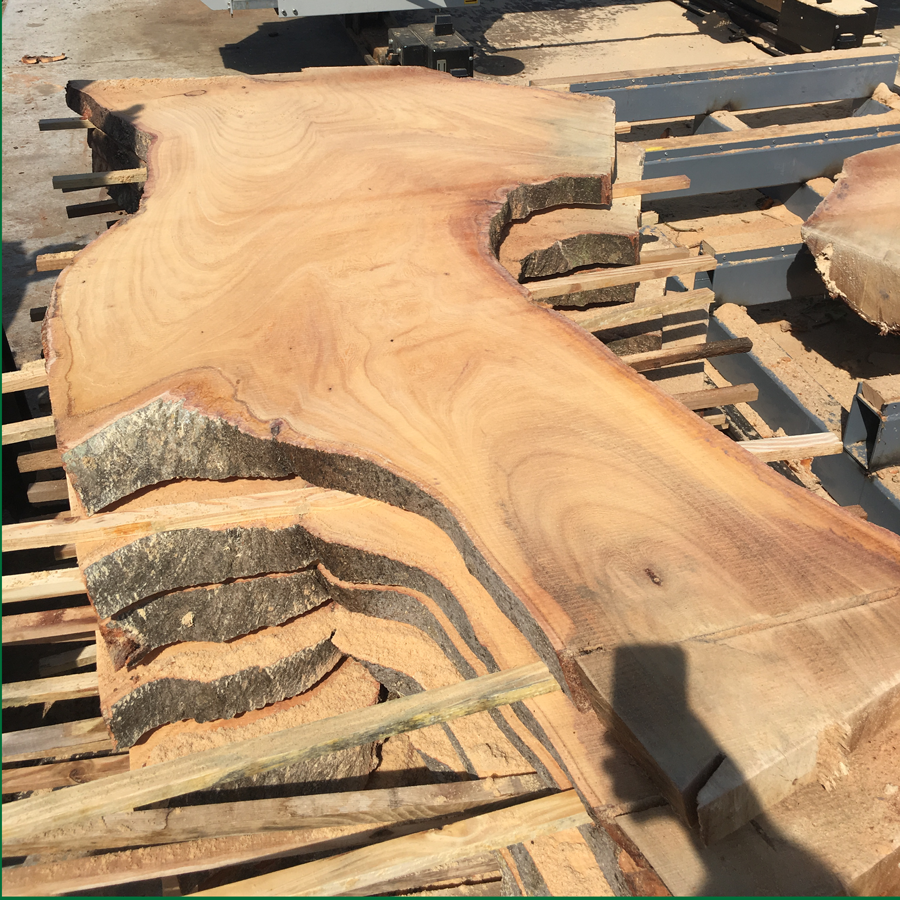
[php_everywhere]
Cuban Laurel – ( Ficus benghalensis )
Growing Region: India, Bangladesh, southeastern Florida. As the Banyan tree grows, its lateral branches send down supporting branches that become absorbing roots when they reach the ground, which then turn into their own tree trunk like structure. Eventually, the host tree is strangled as the Banyan continues to send out more branches and roots/trunks. The mature banyan’s canopy may cover an area more than 1,000 feet in diameter. This tree is incredibly hardy where it is prevalent and grows moderately quick. Surprisingly the lumber has a straight grain despite the fact the limbs and roots rarely grow in a straight line. The lumber has a beautiful grain that varies from straight to wavy and a nice subtle difference from the sapwood to heartwood. The fact that the lumber is so varied it makes it difficult to find two pieces that look the same. Another tree that is commonly taken out of residential landscaping and disposed of in garbage dumps or burned, utilizing these gorgeous one of a kind slabs are friendly to the environment, wallet, and eye.
Common Name: |
Banyan, Chinese banyan, Malayan banyan, Taiwan banyan, Indian laurel, Curtain Fig, or gajumar, Cuban laurel |
Botanical Name: |
Ficus benghalensis |
Indigenous to: |
Asia-through out the forest tracts of India, both in sub-Himalayan region and in deciduous forests of Deccan and other parts of South India but frequently cultivated elsewhere in the tropics. |
Modulus of Rupture: |
14,710 lbf/in2 (101.4 MPa) |
Shrinkage: |
Radial: 4.8%, Tangential: 7.4%, Volumetric: 13.2%, T/R Ratio: 1.5 |
How is it dried: |
Info coming soon |
Is it dried quickly: |
Dries easily, liable to warp |
Stability: |
|
Exterior Wood Recommendation: |
Perishable. Timber is not durable in exposed condition but quite durable in dry places and under cover. |
Fastening Method: |
|
Ecosystem impact: |
This wood species is not listed in the CITES Appendices or on the IUCN Red List of Threatened Species. |
Toxicity and allergic reactions: |
The latex of various species of Ficus can cause allergic skin reactions and contact with the eyes should be avoided. |
Odor: |
No characteristic odor. |
Product we manufacture using this species: |
Wood Slabs |
Other common uses: |
Boxes Building poles Carpentry/joinery (exterior/interior) Cases Containers Furniture Posts Pulp Roundwood |
Susceptibility to |
|
Dry Wood borers: |
Info Coming Soon |
Fungi: |
Info Coming Soon |
Termites: |
Info Coming Soon |
Treatability: |
Easy |
Janka Hardness: |
|
More Product Information